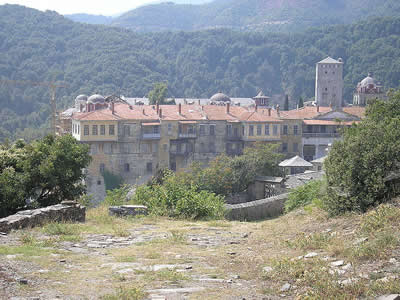Mount Athos is a small, mountainous self-governing state in Greece, located on a peninsula in Macedonia.
The peninsula, which juts into the Aegean Sea, is about 31 miles (50 kilometers) long and 6 miles (10 kilometers) wide. Mount Athos, which is 6,670 feet (2,033 meters) high, towers over the landscape.
Mount Athos is considered a holy Christian state. A center of Eastern Orthodoxy, its population consists almost entirely of monks. More than 1,000 monks live in historical monasteries on the slopes of Mount Athos, in small communities, known as sketes, and in hermitages.
Women and children are not allowed on Mount Athos. Men who make pilgrimages to Mount Athos must get there by boat. Their visas must be approved by four of the monastic secretaries.
 According to Greek mythology, Mount Athos was once a stone that the giant Athos threw at Poseidon.
According to Greek mythology, Mount Athos was once a stone that the giant Athos threw at Poseidon.
Christian legend says that a ship carrying the Virgin Mary to Cyprus was blown off course, causing her to land on Mount Athos.
The peninsula was a sanctuary for Christians by the 4th century AD, and the first monasteries were built in the 9th century.
By 943, the state had defined borders.
The monasteries of Mount Athos house collections of documents and artwork that are more than a thousand years old.
The Great Lavra monastery, founded by the monk Athanasios, who arrived on Mount Athos in 958, contains wall paintings by Frangos Castellanos.
Other works of art in the monasteries include illuminated manuscripts, portable icons and embroidery.
The paintings and other artwork have had a profound influence on later Eastern Orthodox art. The structure of the monasteries has influenced monastic architecture as far away as Russia.
Life on Mount Athos has remained unchanged for hundreds of years. The Julian calendar is still used. Hours are counted using the Byzantine system; the day starts at sunset instead of midnight.
Mount Athos is now a UNESCO World Heritage Site.